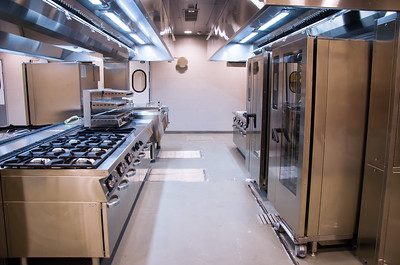
The main objective of setting up a commercial kitchen is mass production and complete food safety. Whether you ring in your commercial kitchen in a separate facility or in your home, it is always good to design it the way you want for maximum efficiency.
Whether you’re preparing a large batch of cookies or bread dough’s to be supplied in your area, your commercial kitchen needs to meet a set of requirements for safe food handling and cleanliness.
Licensing and Inspections:
Commercial kitchens are first inspected and licensed. Different countries have different licensing regulations that start from the design phase itself. It is also feasible for a home kitchen to be approved as a commercial kitchen according to the regulations existing in a country.
However, you still have to get your commercial kitchen inspected and approved for operations, usually by the local health department or corporation/municipality. This is done when you originally design and construct it. It also requires you renew your license regularly. There are various certifications and standards depending on where you operate the commercial kitchen.
Food Service Equipment:
Commercial kitchens mostly use professional equipment. Industrial and commercial kitchen equipment is generally made of stainless steel, which is easy to maintain, convenient to clean and sanitizable.
You can check out a wide range of commercial kitchen equipment from EssEmm Corporation for various processes: Wet Grinder, Multi Utility Grinder, Potato Peeler, Automatic Chapatti Machine, Cutter Mixer, Power Mixers, Vegetable Cutting Machine, Garlic Peelers, Meat Mincers, Automatic Orange Juice Machine, Dish Washers, Ice Cube Machines, Flake Dispensers, Cold Drink Dispensers, Combi Ovens, Conveyor Ovens, etc.
Commercial kitchen equipment is built for bulk cooking, and moving cooked food from the central kitchen to various locations for instant serving. If you run a licensed commercial kitchen, you can use appliances constructed for home cooking lacking industrial capacity, but your setup should still satisfy the required food safety and sanitation norms.
Layout & Work Flow:
Corporations/municipalities and local health departments are only uptight with the layouts of industrial kitchens inasmuch as food safety is taken into account. For a commercial kitchen to be successful, it needs to be designed for effective workflow. For instance, just imagine when the employees in a commercial kitchen area are cramped for space to move freely from one point to another—the point is there should be sufficient counter space for maximum process efficiency. The entire work flow and layout of the commercial kitchen must be given careful design and build consideration. Finally, remember that efficiency in commercial kitchen is defined by the amount of time and work saved over a specific period of time.
Copyright © 2026 EssEmm Corporation